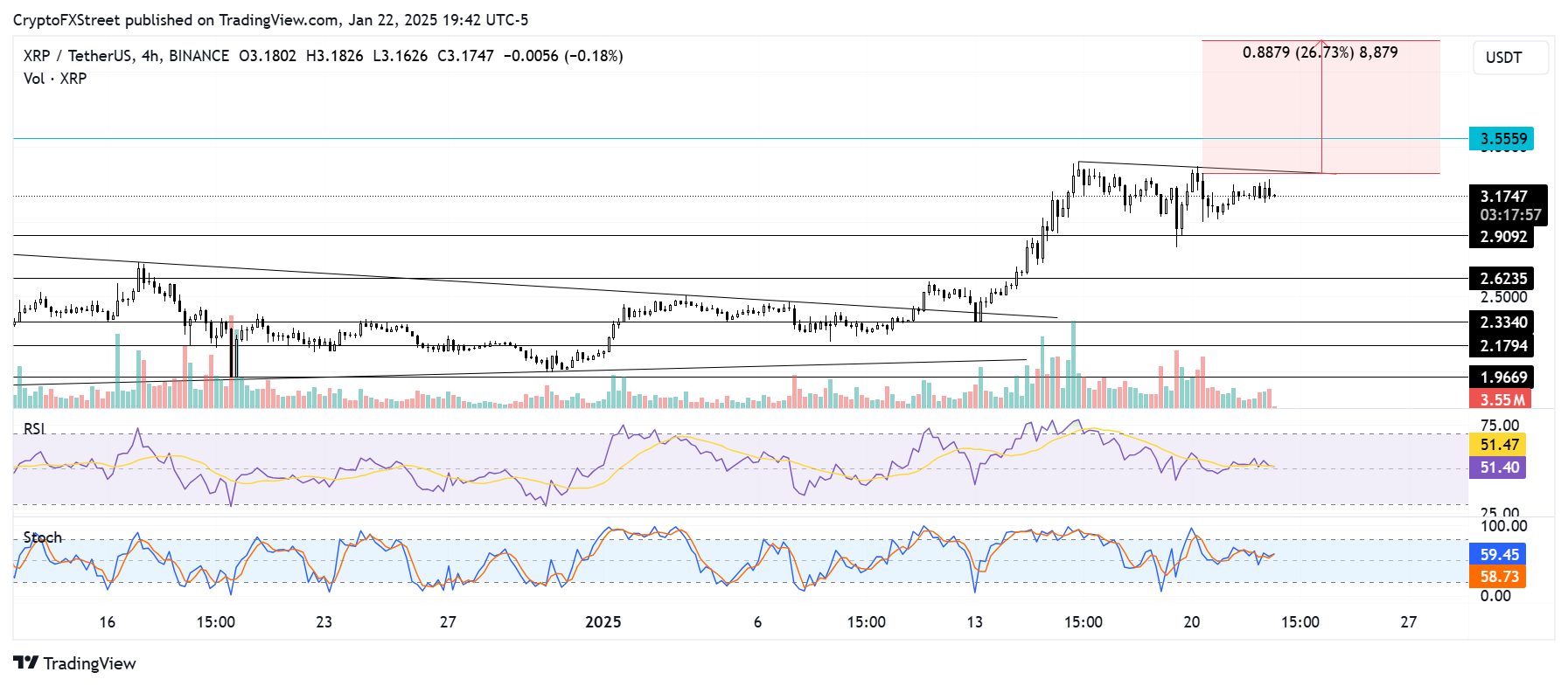Ripple's XRP ETFs: Is SEC approval on the horizon following CME's rumored futures launch?
- CME Group added an XRP and Solana futures page to their staging domain, with the products set to launch on February 10.
- While the page was eventually taken down, the potential launch could cause an influx of new crypto ETF applications for XRP and Solana.
- XRP continues consolidation as it eyes a move above a descending trendline resistance.
The Chicago Mercantile Exchange (CME) allegedly plans to launch Ripple's XRP and Solana (SOL) futures contracts following a now-deleted post on a staging website detailing how trading for both assets will function.
CME Group could potentially launch XRP and Solana futures contracts
The CME allegedly plans to launch XRP and Solana futures contracts following a post on its alleged beta website.
The website beta.cmegroup posted a now-deleted page that displayed details about XRP and Solana futures contracts. The page also claimed that the contracts would begin trading on February 10.
"Trade regulated, capital-efficient futures on two leading cryptocurrencies with new SOL and XRP futures, launching February 10," the staging subdomain stated.
It further noted that the tokens would be available in standard and medium-sized contracts, pending a review by regulators.
However, the website later took down the post, which sparked suggestions that it might have been fake.
Bloomberg ETF analyst James Seyffart suggested that it could be real but would need to be confirmed by an official word from the exchange.
"At the same time, I am also not gonna tweet out a "CONFIRMED" until I see some official notice from CME. Hahaha. I will simply present the situation as I see it until then," James Seyffart wrote in an X post on Wednesday.
Pseudonymous X account Summers insisted the website belonged to the CME after first sharing initial information regarding the futures contracts.
"It's their staging, was tracking it for some time; they always add new products there before they announce," Summers replied Seyffart.
A positive confirmation from the CME could stir a wave of new filings for both XRP and Solana futures ETFs.
It could also hasten the SEC's approval of asset managers' crypto ETF filings for both cryptocurrencies.
The SEC has historically relied on CME's surveillance system to mitigate manipulation risks. This was a major factor in the SEC's approval of Bitcoin futures ETFs before it began considering spot BTC ETF applications.
The potential approval of XRP and Solana futures could speak volumes about how the SEC now classifies both cryptocurrencies with its leadership change following the appointment of Commissioner Mark Uyeda as acting Chair.
XRP continues consolidation amid quest for new all-time high
XRP saw $6.66 million in futures liquidations in the past 24 hours, per Coinglass data. The total amount of long and short liquidations accounted for $3.92 million and $2.73 million, respectively.
XRP continued consolidating within the $2.90 and $3.30 range as its trading volume has plunged in the past three days. The decline underscores a reduction in the crowd excitement since President Trump's inauguration.

XRP/USDT 4-hour chart
On the upside, XRP faces resistance near a descending trendline extending from January 16. If it overcomes this resistance, the remittance-based token could rally to $4.20, but it has to clear its all-time high hurdle of $3.55 before such a move can materialize.
A rejection at the descending trendline resistance could see XRP fall to find support near the $2.90 level. A breach of the $2.90 level will send XRP to the $2.62.
The Relative Strength Index RSI and Stochastic Oscillator momentum indicators are just above their neutral levels, indicating a slightly dominant bullish momentum.
A daily candlestick close below $2.33 will invalidate the thesis.
Ripple FAQs
Ripple is a payments company that specializes in cross-border remittance. The company does this by leveraging blockchain technology. RippleNet is a network used for payments transfer created by Ripple Labs Inc. and is open to financial institutions worldwide. The company also leverages the XRP token.
XRP is the native token of the decentralized blockchain XRPLedger. The token is used by Ripple Labs to facilitate transactions on the XRPLedger, helping financial institutions transfer value in a borderless manner. XRP therefore facilitates trustless and instant payments on the XRPLedger chain, helping financial firms save on the cost of transacting worldwide.
XRPLedger is based on a distributed ledger technology and the blockchain using XRP to power transactions. The ledger is different from other blockchains as it has a built-in inflammatory protocol that helps fight spam and distributed denial-of-service (DDOS) attacks. The XRPL is maintained by a peer-to-peer network known as the global XRP Ledger community.
XRP uses the interledger standard. This is a blockchain protocol that aids payments across different networks. For instance, XRP’s blockchain can connect the ledgers of two or more banks. This effectively removes intermediaries and the need for centralization in the system. XRP acts as the native token of the XRPLedger blockchain engineered by Jed McCaleb, Arthur Britto and David Schwartz.

